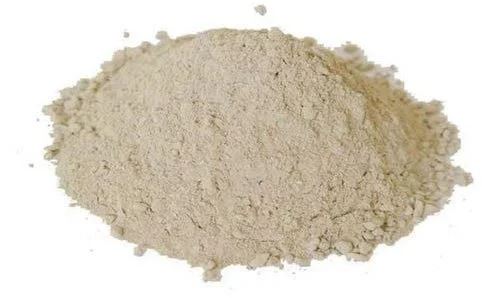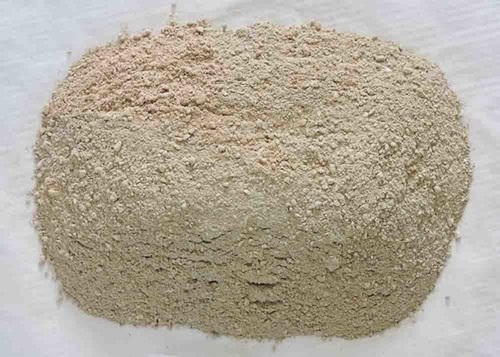The Impact of Refractory Clay on the Ceramic Industry
The ceramic industry relies on various materials to produce functional and decorative items. Among these materials, refractory clay stands out as a key component due to its exceptional properties and suitability for high-temperature applications. Refractory clay has revolutionized ceramic production, enabling manufacturers to create products that are not only visually appealing but also durable and long-lasting.
What is Refractory Clay?
Refractory clay, also known as fire clay, is a type of clay that can withstand high temperatures without losing its physical and chemical properties. It is primarily composed of alumina and silica, which give it the ability to resist heat and maintain its structural integrity even under extreme conditions. This unique characteristic makes refractory clay an ideal material for applications that involve exposure to high temperatures, such as ceramic production, metallurgy, and furnace lining.
Properties of Refractory Clay
Refractory clay possesses several properties that make it highly suitable for the ceramic industry. These properties include:
Heat Resistance
Refractory clay has excellent heat resistance, allowing it to withstand temperatures above 1,000 degrees Celsius. This property ensures that ceramic products can be fired at high temperatures without compromising their structure or appearance.
Low Thermal Conductivity
The low thermal conductivity of refractory clay minimizes heat loss during the firing process. This property allows for efficient and uniform heat distribution, ensuring consistent firing results and reducing energy consumption.
Chemical Stability
Refractory clay exhibits exceptional chemical stability, even when exposed to aggressive chemicals and gases. This stability is vital in preventing the degradation of ceramic products, making them resistant to corrosion and chemical attacks.
Mechanical Strength
The mechanical strength of refractory clay provides structural integrity to ceramic products. It enables the formation of intricate shapes and ensures that the products can withstand external forces, such as impact or stress, without cracking or breaking.
Insulating Properties
Refractory clay has good insulating properties, which are beneficial in applications where temperature control is crucial. It acts as a barrier against heat transfer, preventing excessive heat loss or gain, and maintaining a stable environment for the ceramic products.
Refractory Clay in Ceramic Production
The utilization of refractory clay in ceramic production has a significant impact on the quality and durability of the final products. Here are some ways in which refractory clay influences the ceramic industry:
Enhancing Heat Resistance
One of the primary advantages of refractory clay in the ceramic industry is its ability to withstand high temperatures. By using refractory clay in the manufacturing process, ceramic products can be fired at higher temperatures, which leads to enhanced heat resistance. This means that the ceramic items can endure extreme temperatures without losing their shape, strength, or aesthetic appeal. Whether it's ceramic tiles, pottery, or industrial ceramics, the inclusion of refractory clay ensures that the final products can withstand the rigors of high-temperature environments.
Improving Structural Integrity
The mechanical strength of refractory clay plays a vital role in improving the structural integrity of ceramic products. It provides stability and prevents deformation or breakage during the firing process and subsequent use. The use of refractory clay enables the creation of intricate and delicate ceramic designs, as it offers the necessary support and resistance to external forces. This ensures that the final products maintain their shape and durability over time.
Achieving Consistency in Firing
Consistent firing is crucial in the ceramic industry to produce high-quality products. Refractory clay aids in achieving this consistency by providing uniform heat distribution during the firing process. Its low thermal conductivity helps maintain a stable temperature throughout the kiln, ensuring that all ceramic items are fired evenly. This results in consistent color, texture, and strength across the entire batch of products.
Increasing Product Lifespan
Refractory clay significantly contributes to extending the lifespan of ceramic goods. Its excellent heat resistance and chemical stability make ceramic products resistant to thermal shocks, chemical attacks, and general wear and tear. By incorporating refractory clay into the production process, manufacturers can create ceramics that have a longer lifespan, reducing the need for frequent replacements and improving overall customer satisfaction.
Ensuring High-Quality Finishes
The use of refractory clay in the ceramic industry also guarantees high-quality finishes on the products. Refractory clay has a smooth texture and fine particle size, which allows for precise shaping and detailing of ceramic items. This results in a refined and polished appearance, enhancing the visual appeal of the finished goods. Whether it's intricate designs on pottery or flawless glazing on tiles, refractory clay contributes to achieving exceptional aesthetics.
Sustainable and Environmentally Friendly
In recent years, sustainability has become a significant consideration in various industries, including ceramics. Refractory clay offers environmental benefits as it is a naturally occurring material that is readily available. Its production involves minimal processing and does not require the use of harmful chemicals or additives. Additionally, ceramic products made with refractory clay have a long lifespan, reducing the overall environmental impact through extended use and reduced waste generation.
Challenges and Considerations
While refractory clay brings numerous advantages to the ceramic industry, there are also challenges and considerations to be aware of. One of the main challenges is the availability of high-quality refractory clay deposits. It is essential for manufacturers to source clay from reliable and reputable suppliers to ensure consistent quality and performance in their ceramic production.
Another consideration is the cost associated with refractory clay. As a specialized material, refractory clay may be relatively more expensive compared to other types of clay. However, the long-term benefits, such as increased product lifespan and improved quality, often outweigh the initial investment.
Future Innovations
The ceramic industry continues to evolve, and with it, innovations in the use of refractory clay are expected. Researchers and manufacturers are constantly exploring new techniques to enhance the properties of refractory clay, such as developing clay blends for specific applications or incorporating additives to further improve heat resistance or mechanical strength. These advancements will contribute to pushing the boundaries of ceramic production and expanding the possibilities for unique and durable ceramic products.
Conclusion
Refractory clay has undoubtedly made a significant impact on the ceramic industry. Its exceptional properties, including heat resistance, mechanical strength, and chemical stability, have revolutionized the manufacturing process and improved the quality, durability, and aesthetics of ceramic products. By utilizing refractory clay, manufacturers can create items that can withstand high temperatures, maintain structural integrity, achievehigh-quality finishes, and have a longer lifespan. Furthermore, refractory clay offers sustainability benefits, being a naturally occurring material with minimal environmental impact.
As the ceramic industry continues to evolve, innovations in the use of refractory clay are expected to further enhance its properties and expand its applications. With ongoing research and development, manufacturers can explore new techniques and blends to optimize the performance of refractory clay in ceramic production.
In conclusion, refractory clay is an indispensable material in the ceramic industry, playing a crucial role in creating durable, visually appealing, and high-quality ceramic products. Its impact on the industry is undeniable, and its future looks promising as advancements and innovations continue to shape the ceramic manufacturing landscape.
FAQ
Is refractory clay only used in the ceramic industry?
Refractory clay has applications beyond the ceramic industry. It is also
utilized in metallurgy, furnace lining, and other high-temperature processes
where heat resistance and stability are required.
Can refractory clay be recycled?
Yes, refractory
clay can be recycled. The clay can be reprocessed and used again in ceramic
production, reducing waste and environmental impact.
Are there any alternatives to refractory clay in the
ceramic industry?
While there are alternative materials available,
refractory clay remains the preferred choice due to its unique properties and
suitability for high-temperature applications.
Does refractory clay affect the color of ceramic
products?
Refractory clay itself does not significantly impact the color of
ceramic products. However, it contributes to achieving consistent firing
results, which can influence the final color of the ceramics.
How can I ensure the quality of refractory clay for my
ceramic production?
To ensure the quality of refractory clay, it is
advisable to source it from reliable suppliers who provide consistent and
high-quality clay. Conducting thorough research and selecting reputable
suppliers will help guarantee the performance and reliability of the clay in
your ceramic production processes.



Comments
Post a Comment